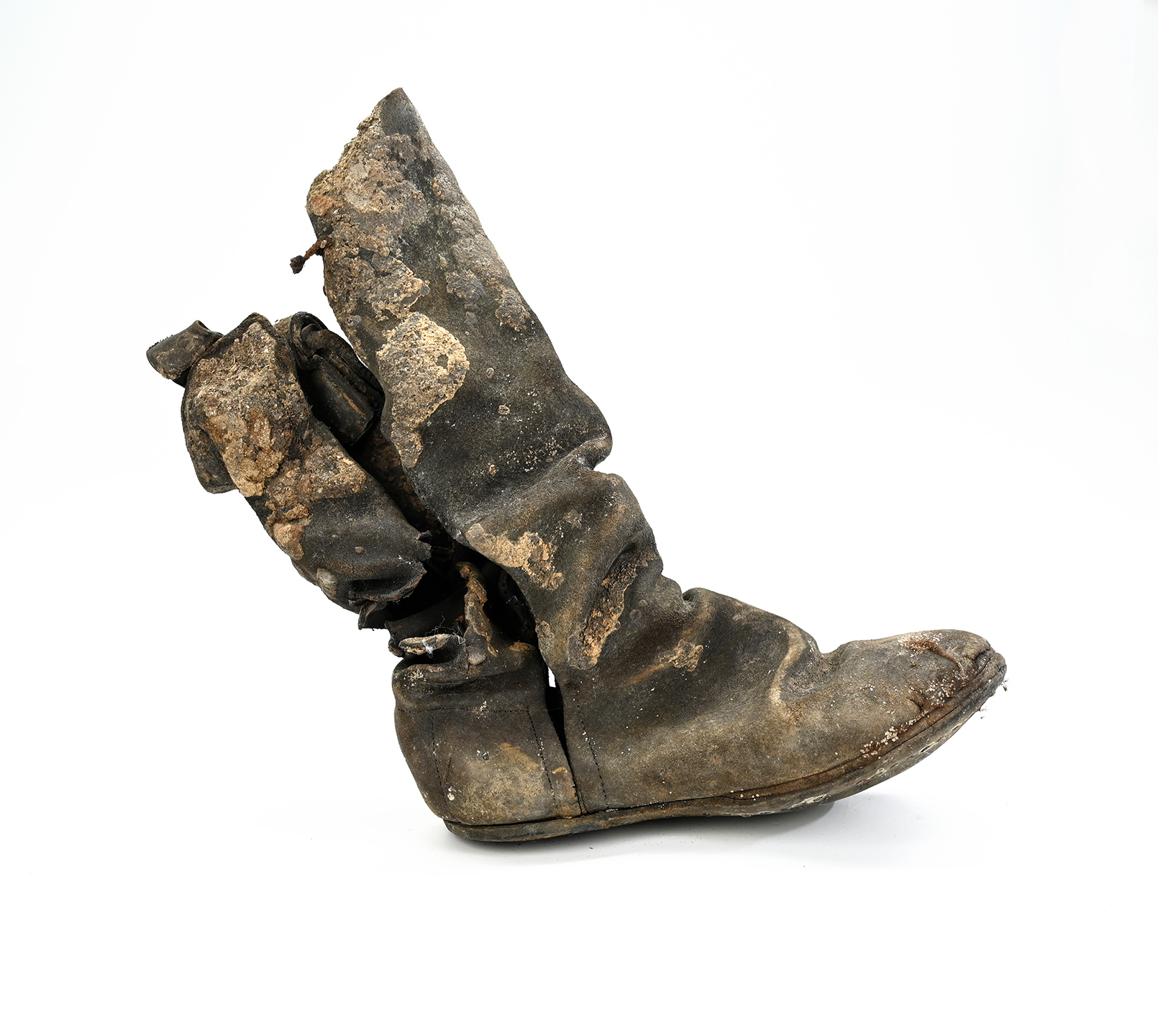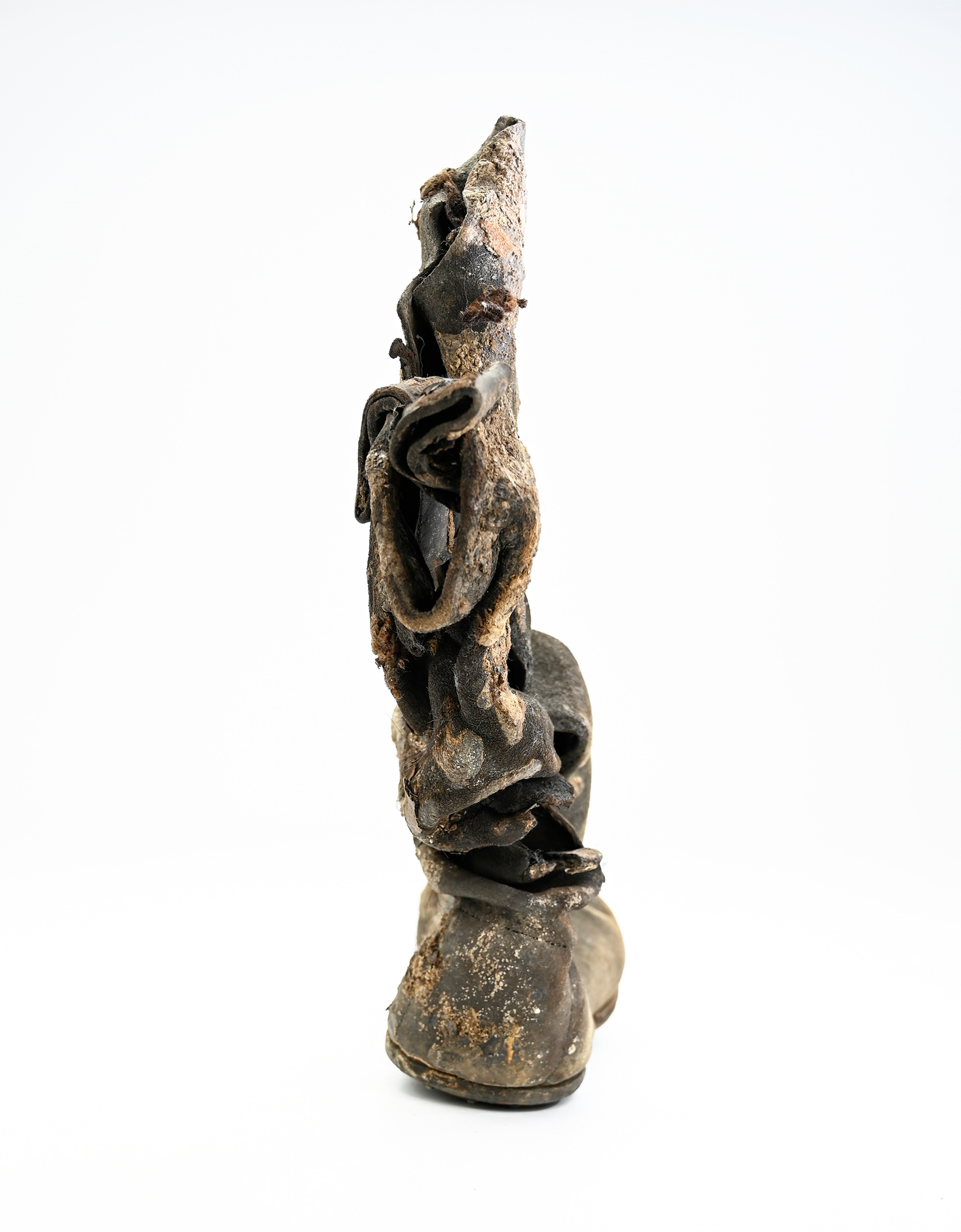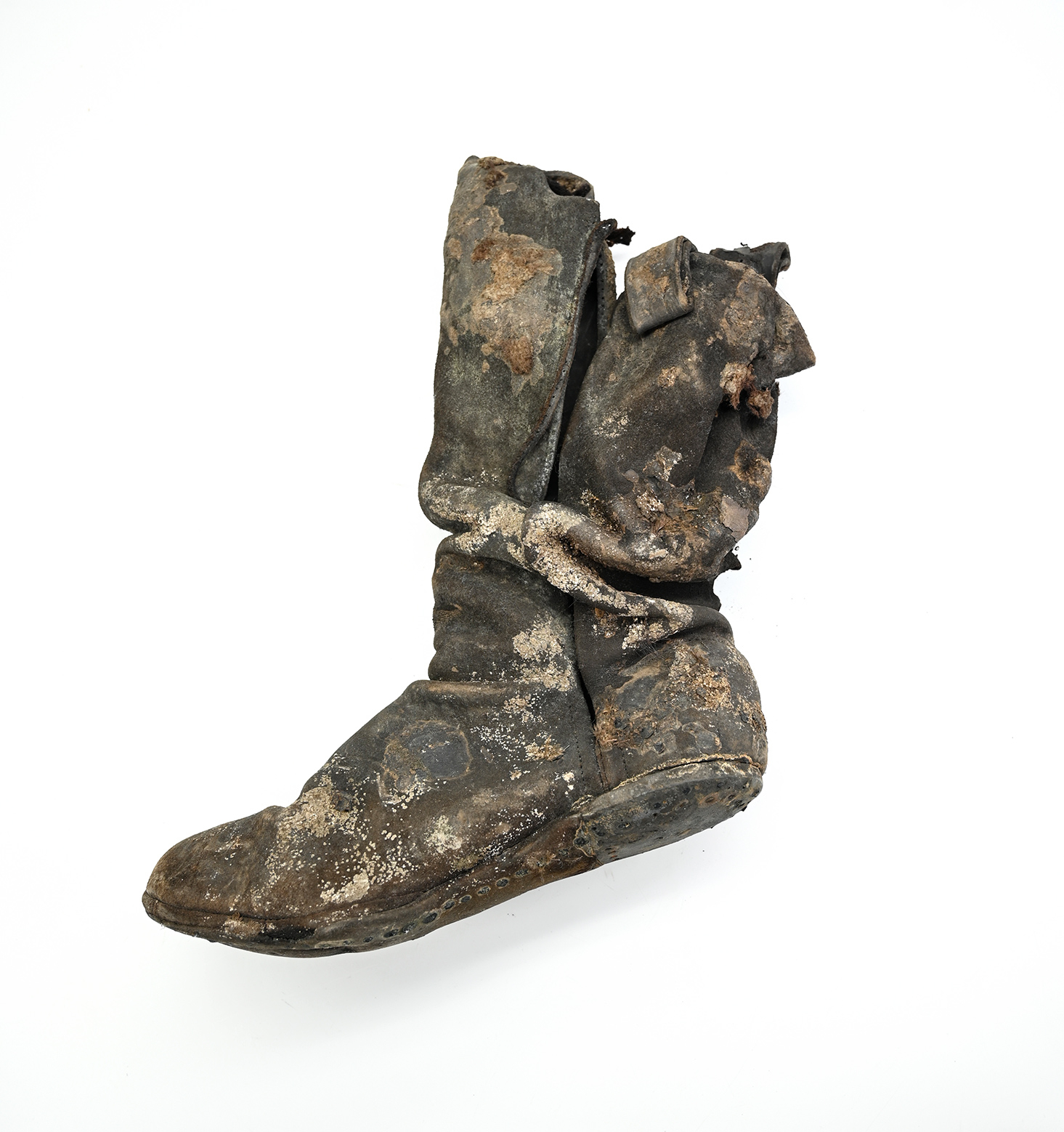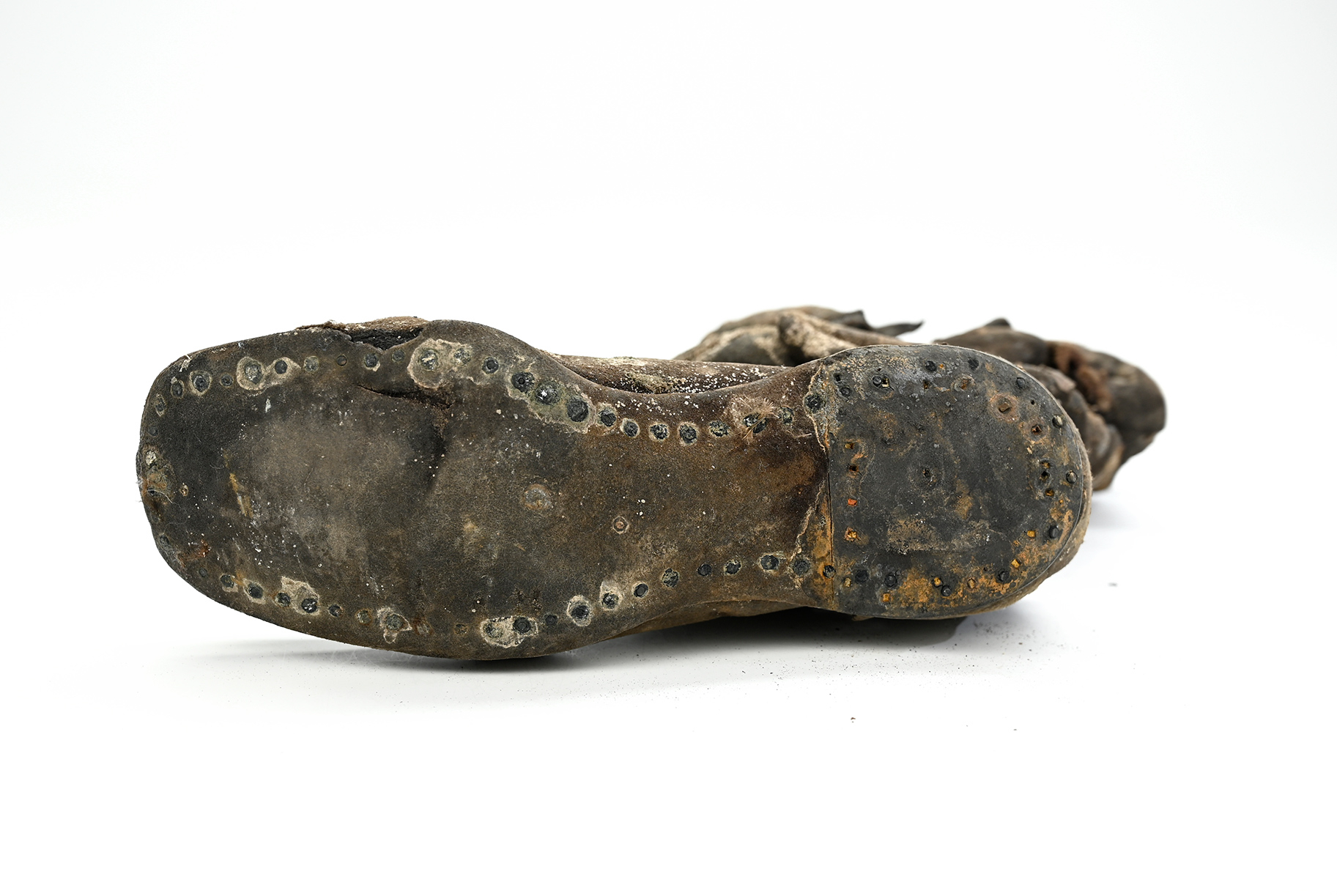site search
online catalog
EXCAVATED CIVIL WAR/ INDIAN WAR CAVALRY BOOT: FORT PEMBINA

Hover to zoom




$95.00 SOLD
Quantity Available: None
Item Code: 1052-544
This appears to be the very scarce Civil War issue cavalry boot, but uses brass screwed soles which came in with the 1872 pattern. The leather is stiff and wrinkled so it is tough to get an exact height measurement, but it seems slightly shorter than the M1872 with its 15” front and 14” side seam, and the pull tabs are mounted on the inside rather than half in and half out, as on the M1872. So, it might be a transitional piece of some sort or was perhaps resoled. The boot is in relic condition, excavated at Fort Pembina, with stains and come gray muck still adhering to it. The side seam is open on both sides, and there is one sizable hole on rear right just above the ankle. The sole is intact, but missing the heel. We hesitate to date it precisely, but the fort was established in 1870 and much of the material coming out of the dig is Civil War surplus that was issued by the army well into the 1870s. In any case, it certainly qualifies as early Indian War issue.
This was excavated at Fort Pembina, North Dakota, where anaerobic soil conditions have yielded both cloth and leather in remarkable states of preservation. (Excavations were done on private property with the owner’s permission.) The fort was situated in the Red River Valley in North Dakota near the Canadian border. Trading posts existed earlier in the area as part of the fur trade, and the first U.S. military post there was temporary- manned by a detachment of Minnesota troops in 1863-1864 following the 1862 Sioux uprising. In March 1870 a new fort was established south of the Pembina River and about 200 yards west of the Red River, completed by July and named in honor of Gen. George H. Thomas. The name was changed to Fort Pembina in September and the initial garrison consisted of two companies of the 20th US Infantry. As was typical of the army at this period, the troops were uniformed and equipped from government stocks left over from the Civil War and gradually refitted over time as new patterns were adopted and issued.
The main purpose of the fort was to provide security for settlers worried about Sioux returning south from Canada, but much of their duty involved escorting boundary surveys along the Canadian border and preventing Fenian raids heading north into Canada. The post included enlistedmen’s barracks, officers’ quarters, guard house, ordnance storehouse, company kitchen, root house, laundress’s quarters, quarters for civilian employees, hospital and hospital servant’s house, a barn for the “hospital cow,” quartermaster and commissary offices and storehouse, stables, wagon shed, etc. The garrison reached peak strength in 1878 of 200, but the average was about 125 enlisted men and 8 officers. An October 1885 return listed 97 men, 2 field pieces, 1 mountain howitzer, 100 rifles, 19 pistols, 23 mules, and 9 wagons. By 1890 the post had just 23 men, and after an 1895 fire destroyed some 19 buildings it was decided to abandon the fort rather than rebuild. The last detachment left in September, the property was turned over to the Interior Department, and later sold in 1902.
Army issue cavalry boots of any period are scarce. This has a tight provenance to an early Indian War post. [sr] [ph:m]
~~~~~~~~~~~~~~~~~~~~~~~~~~~~~~~~~~~
THIS ITEM, AS WITH ALL OTHER ITEMS AVAILABLE ON OUR WEB SITE,
MAY BE PURCHASED THROUGH OUR LAYAWAY PROGRAM.
CLICK HERE FOR OUR POLICIES AND TERMS.
THANK YOU!
Inquire About EXCAVATED CIVIL WAR/ INDIAN WAR CAVALRY BOOT: FORT PEMBINA
Most Popular
Historical Firearms Stolen From The National Civil War Museum In Harrisburg, Pa »
Theft From Gravesite Of Gen. John Reynolds »
Selection Of Unframed Prints By Don Troiani »
Fine Condition Brass Infantry Bugle Insignia »
British Imported, Confederate Used Bayonet »
Scarce New Model 1865 Sharps Still In Percussion Near Factory New »
featured item
CONFEDERATE CAVALRY CAPTAIN’S FROCK COAT OF CAPT. EDWARD BIRD, “EFFINGHAM HUSSARS,” 2nd BATTALION AND 5th REGIMENT GEORGIA CAVALRY
This rare, identified, Confederate cavalry captain’s frock coat belonged to an officer who served from 1861 though 1865, rising from Captain to Colonel, with extensive action especially in Wheeler’s cavalry corps fighting against Sherman in the… (1179-232). Learn More »


